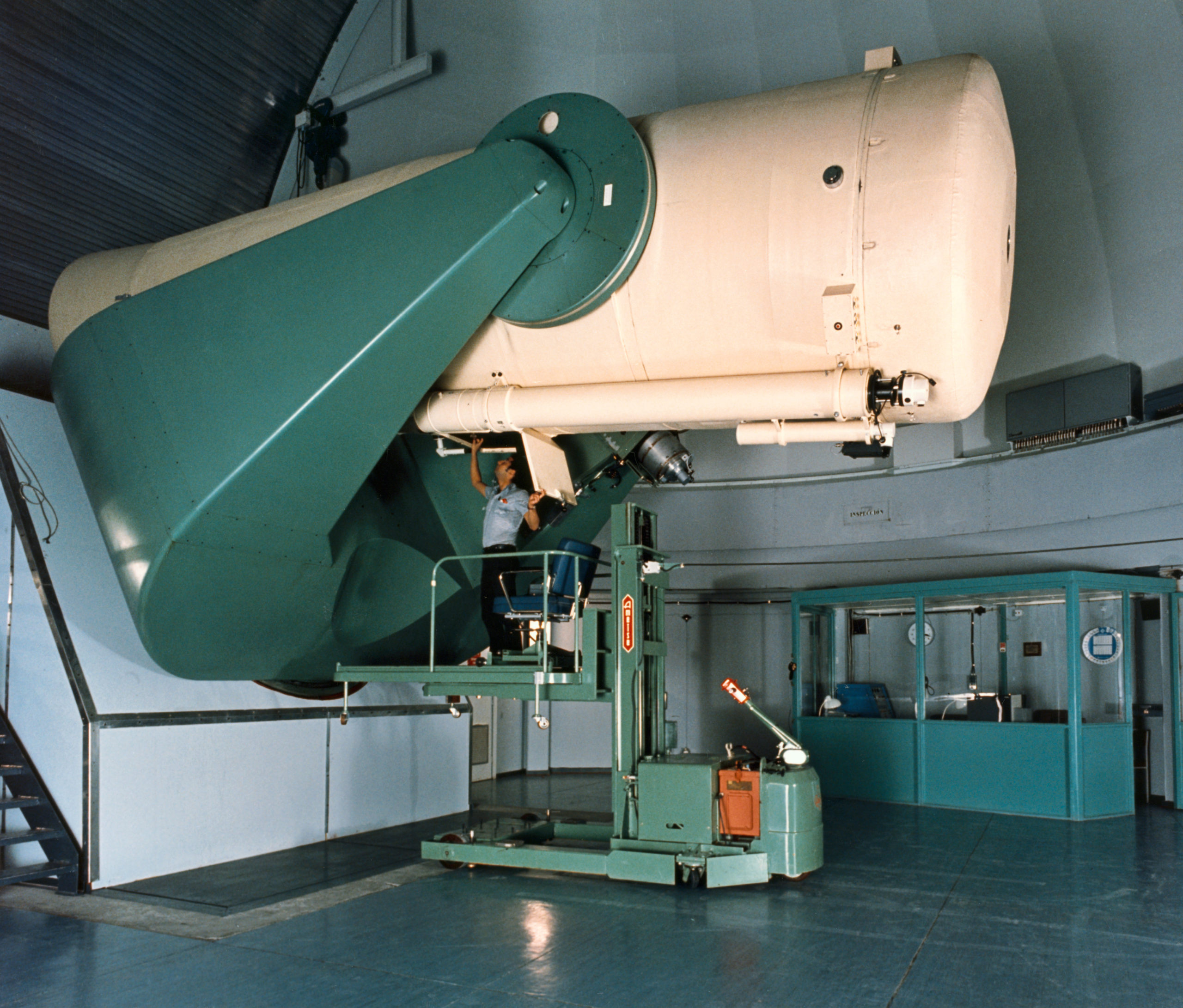JULY 12, 2001: American astronomer Gary Melnick and his colleagues publish their discovery of water vapor around the old, evolved star CW Leonis, suggesting the presence of exocomets around that star. The subject of exocomets, including the importance of this discovery, is discussed in a previous “Special Topics” presentation.
JULY 12, 2126: Comet 109P/Swift-Tuttle, the parent comet of the Perseid meteors, will pass through perihelion at a heliocentric distance of 0.956 AU. A little over three weeks later the comet will pass 0.15 AU from Earth. 109P/Swift-Tuttle is a future “Comet of the Week.”
JULY 14, 1996: European Southern Observatory astronomer Guido Pizarro takes the first of several photographs that show the presence of a cometary object discovered early the following month by Eric Elst. Comet Elst-Pizarro did not show a coma but did exhibit a distinct tail, and was found to be traveling in a low-eccentricity orbit entirely within the main asteroid belt. Dual-designated as “asteroid” (7968) and as “comet” 133P, Elst-Pizarro was the first-known example of a “main belt comet,” more commonly referred to today as “active asteroids.” These objects are the subject of a future “Special Topics” presentation.

JULY 14, 2015: NASA’s New Horizons mission passes by Pluto and its system of moons. Pluto is the subject of this week’s “Special Topics” presentation, and the New Horizons encounter is discussed in detail there.
JULY 15, 1862: American amateur astronomer Lewis Swift, who would become one of the top visual comet discoverers of the late 19th Century, discovers his first comet, which was independently discovered three days later by Horace Tuttle. Comet 109P/Swift-Tuttle, as this object is now known, is the parent comet of the Perseid meteor shower, and is a future “Comet of the Week.”
JULY 15, 1965: NASA’s Mariner 4 spacecraft passes by Mars and returns the first close-up photographs of the Martian surface. These revealed the presence of numerous impact craters, and significantly affected humanity’s views concerning the possibility of Martian life.
JULY 15, 2020: The large main-belt asteroid (2) Pallas will be at opposition. It is currently traveling west-southwestward through the constellations of Vulpecula and Hercules and is visible in small telescopes near magnitude 9.5.
JULY 16, 1994: Nucleus “A” of Comet Shoemaker-Levy 9 impacts Jupiter, the first of over twenty nuclei that would impact that planet over the course of the subsequent week. The impacts had unexpectedly prominent effects on Jupiter’s atmosphere and played a major role in our current understanding of the overall effects by impacts of small bodies. Comet Shoemaker-Levy 9 is this week’s “Comet of the Week.”
JULY 16, 2011: NASA’s Dawn spacecraft arrives at and goes into orbit around the large main-belt asteroid (4) Vesta. Dawn would spend the next 13½ months orbiting Vesta and making detailed studies of it before departing for the large main-belt asteroid (and “dwarf planet”) (1) Ceres. The Dawn mission is discussed in last week’s “Special Topics” presentation, and Vesta itself is discussed in the Week 1 “Special Topics” presentation.
JULY 16, 2015: The Arkyd-3 Reflight CubeSat, a proof-of-concept satellite designed and built by the private company Planetary Resources, is deployed into Earth orbit from the International Space Station after arriving at the ISS three months earlier. Planetary Resources’ efforts to establish asteroid mining operations are discussed in a previous “Special Topics” presentation.
JULY 16, 2020: Pluto is at opposition. It is currently traveling slowly west-southwestward through eastern Sagittarius and is visually detectable with larger telescopes near magnitude 14.5. Pluto is the subject of this week’s “Special Topics” presentation.
JULY 17, 2020: The main-belt asteroid (904) Rockefellia will occult the 7th-magnitude star HD 161605 in Ophiuchus. The predicted path of the occultation crosses parts of southern Taiwan, the Hainan Peninsula of China, northern Vietnam, northern Laos, northern Thailand, southern Myanmar, far southern India, southern Somalia, and northern Kenya.
JULY 18, 2019: Retired University of Nebraska-Lincoln astronomer Edward Schmidt publishes the results of his study identifying as many as 21 possible analogs of the star KIC 8462852 (aka “Boyajian’s Star”), i.e., stars with large and random drops in brightness possibly due to large clouds of exocomets. Boyajian’s Star is discussed in a previous “Special Topics” presentation.
More from Week 29:
Comet of the Week Special Topic Free PDF Download Glossary
Ice and Stone 2020 Home Page


